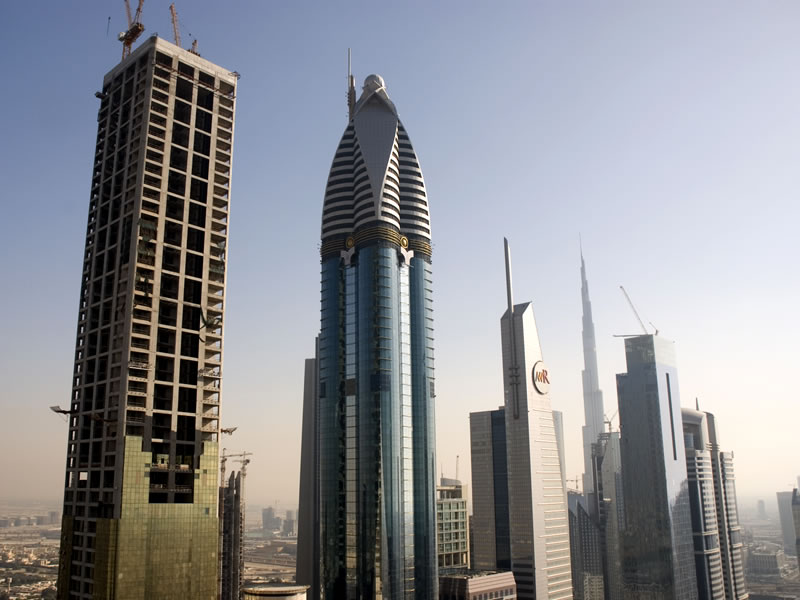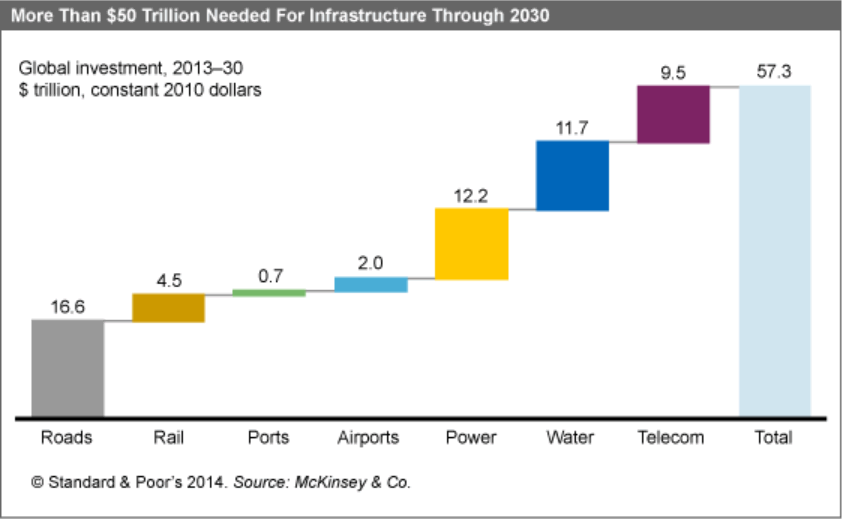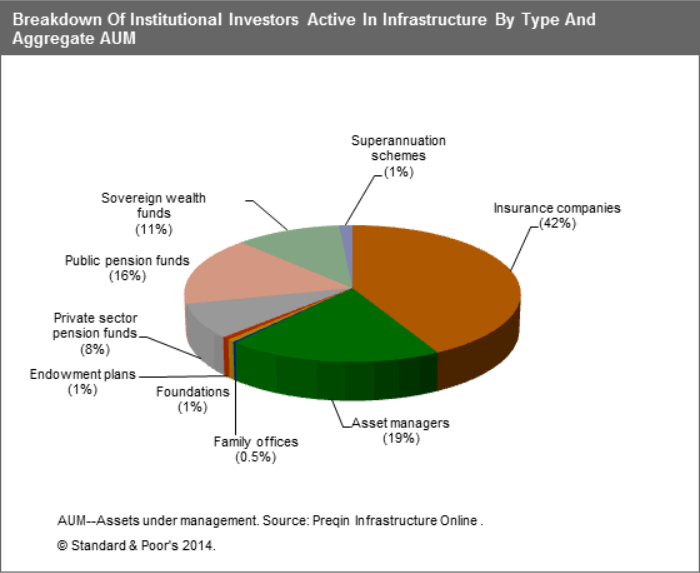The Solari Report
2nd Quarter 2015 Wrap-Up
Infrastructure: Conquest or Creation

“Nowadays, people will go anywhere to avoid paying tax. A quick visit to Lichtenstein, Monaco, maybe Jersey; empty the vaults of private wealth, and you could write off the world’s debt. In a day, in an hour, in a minute. Three-quarters of the world’s cash is hidden away in places exactly like this.”
– CIA agent in Turks & Caicos, Part II of The Worricker Trilogy
By Catherine Austin Fitts
I. Infrastructure & Civilization

The architects who constructed the great buildings of Europe understood that if you built a great cathedral, it would inspire. These architectural feats lifted the minds of men out of the mud. Over the centuries, this inspiration would also lift real estate values and tax yields as it attracted talent, tradesmen, new construction and open markets.
A society’s physical infrastructure is of utmost importance. Through the ages, it has been one of the critical determinants of who lived or died, of which nations flourished or failed. While a nation’s geography is very important, leveraging geography and natural resources with infrastructure makes an enormous difference.
To better understand the role of infrastructure in people’s lives, I highly recommend the following documentaries:
• Engineering an Empire describes the efforts of fourteen civilizations (from Rome to Persia) to build infrastructures designed for war – either winning at warfare or defending against it. The series also looks at the most effective management of nature, such as channeling rivers and diverting flooding.
• The Seven Wonders of the Industrial World, a BBC documentary, tells the stories of six great industrial infrastructure projects along with one tragic failure:
- Scotland’s Bell Rock Lighthouse
- London’s Sewer System
- The Transcontinental Railroad
- The Brooklyn Bridge
- The Panama Canal
- The Hoover Dam
The tragic failure is the ship, the Great Eastern. These seven case histories explain the extraordinary impact that infrastructure projects have on a society. Such projects save lives, lower transportation-time and costs and facilitate communication and trade. However, designing these projects, building the financial and political constituencies to support them, and finally bringing them into being is rarely easy. The challenges involved are many.
Getting Your Mind Around Infrastructure
I grew up and worked in a world where people saw the creation and building of great infrastructure as a source of power. It was an ever-present focus – an important topic considered full of electricity.
I was shocked when, many years later, I discovered that a celebrity-soaked media had managed to convert infrastructure into a topic that put many people to sleep. Since that time, I have been on the lookout for anything inspiring a fresh perspective on infrastructure.
One of my favorites is the “bridge scene” in the film Margin Call:
Other inspirations are video games which help players simulate building a city or open up a region via railroads:
It is much easier to grasp the economic power of successful infrastructure investment when you analyze economies on a place-based basis. For control purposes, place-based investment and economic disclosure have traditionally been challenging…or even absent. Hence, the contribution of infrastructure on financial returns is not obvious for many observers and retail investors.
Because physical infrastructure represents a great deal of “stuff,” I have found it helpful to troll through the Wikipedia entries on infrastructure and follow the links into areas I find interesting:

II. Infrastructure In the News
The topic of infrastructure is coming up in the news a great deal lately. Why? There are many reasons. They all converge, however, into one fundamental reality which is advancing upon us like a pig being squeezed through a snake.
The thirty-year bull market in government and municipal bonds which has funded a great deal of infrastructure is drawing to a close. Remarkably, this is happening just as we encounter:
- The re-balancing of the global economy
- Growth in the emerging markets
- Significant environmental stress
- A push towards outer space
- Significant opportunities from new technology
Each of these developments calls for big increases in infrastructure investment. Recent estimates put global demands at $50 trillion or more between now and 2030.
(Source: forwardinvesting.com)
Let’s look at the variables underscoring the importance of societal infrastructure:
The US has Fallen Behind

While the US has made a significant investment in its control infrastructure over the last fifty years (surveillance, underground bases, space), it has fallen behind in the traditional economy. Traveling in Asia and Europe is often embarrassing – a reminder that I come from a country which, in many places, is no longer considered “first world.”
Emerging Markets: Maintaining Growth
Economic growth in the emerging markets has been stronger than in the developed world, even following the 2008-9 financial crisis. However, growth puts demands on infrastructure. If this growth is to continue, increased investment in infrastructure will be necessary.
The greatest needs are in the BRICS nations which, as a group, constitute a significant driver for growth within the G-20.
• See: BRICS
Megacities

The global population is urbanizing. Worldwide, there are now (27) cities with populations numbering greater than 10 million people. This calls for new ways of organizing transportation, housing and many other systems.
The Silk Road
As Asia grows, the opportunity to build out the infrastructure connecting it with a wealthy Europe becomes more attractive. This is a driving force behind numerous regional planning and collaboration initiatives emerging in Eurasia:
- Silk Road Economic Belt
- One Belt, One Road (Sept –October 2013)
- The Asian Highway
- World Landbridge Map
BRICS: Leaving the G-7 Nest

Frustrated by the inability of the IMF to restructure, the BRICS nations are building cooperative financing mechanisms. In launching the Asian Infrastructure Investment Bank, China’s leadership has underscored the extent to which the US and G-7 have fallen behind in an area where they have traditionally provided global leadership.
- New Development Bank (BRICS) (July 2014)
- Asian Bond Fund
- Silk Road Fund Company
- Asian Infrastructure Investment Bank
China is inspiring new competition on who can lead in the game of “engineering empire.” This has pushed the US to pass fast track authority for a series of trade agreements in both the Pacific and Atlantic regions which will unleash greater demands for infrastructure.
Sovereign Wealth Funds
The growth of sovereign wealth funds – primarily in countries highly dependent on commodities and natural resources – has created large pools of capital. These pools are coalescing into significant, long-term investment. Given their size and strategic role, sovereign wealth funds are in a position to encourage excellence in infrastructure investment as it contributes to national, regional and global long-term investment returns.
New Technology

New technology (among many examples: stronger but lighter new materials, new fabrication technology, breakthrough energy technology, digital systems, robotics and drones) is having a dramatic impact on opportunities to upgrade our existing infrastructure and to build anew. Communications technology is re-optimizing how we use existing systems to reduce the need for physical infrastructure. As new technologies come online in all areas of the economy, additional capacity should become available to focus on infrastructure.
Space: Becoming a Multi-planetary Civilization
It is clear that Mr. Global and the US have made a commitment to making the earth part of a multi-planet society. Numerous other nations are increasing their commitment to space, including the BRICS. Whatever we commit to space, it will require a massive investment in suborbital and space infrastructure. This will require increases in productivity and upgrades in our manufacturing base which can only happen with significant investment in infrastructure.
Material on Shift from Global 2.0 to Global 3.0

(Source, “New Silk Road,” Executive Intelligence Review)
The shift of significant capital out of the industrial economy into a more networked economy also impacts how we design and revitalize our current infrastructure and what new infrastructure we will need. Some of our recent publications will help you understand the changes underway which will impact infrastructure, including the revolution in digital technology and communications:
III. Unique Trends to Consider
There are several important issues to consider regarding a “jump the curve” plan for global infrastructure investment.
Covert Goals vs. Productivity & Risk Management

There are numerous reasons to keep infrastructure goals secret such as national security and business competition. Secrecy, however, often comes at a high cost. It makes collaboration difficult and it can lead to Orwellian “explanations” which often result in wider misunderstandings. Managing infrastructure’s growing needs while maintaining secrecy may also be a factor in the push for central control and reducing the awareness of the population.
The benefits of group intelligence which come with open source design and analysis (and the competition associated with disclosure) are invaluable. Secrecy, on the other hand, protects incompetence. It allows mediocre talent which excels at lying, stealing or the use of force to assert itself.
An additional concern with confidentiality in infrastructure investment is the possibility of slave labor – whether that labor is physically controlled or mind-controlled. Tragically, there is a historical relationship between significant resources for infrastructure, totalitarian systems and slave labor.
Power & Currency Wars

Invariably, a review of historical infrastructure spending reveals energy as a significant category of investment – and a key cost component of all categories. Investment in energy systems (and redundant sources of power) is critical. The ability to provide inexpensive energy is an essential variable of a society’s economic power and success. However, the costs must be balanced with issues of political power.
The US dollar is based on a fossil fuel standard. The US currently manages the global trade system through its control (with its allies) of global trade in fossil fuels.
To change the source of energy – for example, to introduce a breakthrough energy technology – would result in changes in the currency system. This, in turn, would impact political power. A change in energy systems would also mean the creative destruction of pension fund assets and sovereign wealth fund assets; unless those assets were repositioned in anticipation of such change.
Assuming that we continue to use our current energy model, we still face significant risks. China is building a large number of new nuclear plants. What are the risks? No matter how cost-effective nuclear technology, will we be able to use it safely in a world as violent as ours? What are the risks of Fukushima fallout? How is fracking technology affecting the water supply? Does offshore drilling threaten the oceans?
In essence, a global infrastructure and technology strategy is intimately tied to a power and energy strategy – which is intimately tied to governance and investment models.

In short, a “jump the curve” infrastructure plan may require that we shift out of the 500-year-old “central banking-warfare model.” This would be a big change. It might explain why China’s Asian Infrastructure Investment Bank is causing panic amidst the US leadership.
Planet Debt
The Solari Report 2015 Q1 Wrap Up focused on “Planet Debt.” Many sovereign governments are running short of debt capacity as the long-term bull market in bonds comes to a close. Quantitative easing has stockpiled trillions in the bond and derivatives markets. The ability to do so has prevented hyperinflation in many parts of the real economy. But now the question is: where will all this money go?
Some of it is bound to move into the real economy. Indeed, these funds may be the source of financing for new infrastructure projects. However, unless we invest efficiently in infrastructure, it will be difficult for this money to achieve reasonable long-term returns in the real economy. Consequently, the future of the central banking-warfare model and that of global infrastructure investment are inextricably linked.

Planet Equity
The Solari Report 2014 Annual Wrap Up focused on “Planet Equity.” Global equity markets have grown from $11 trillion in 1990 to $70 trillion in 2015. They will continue to grow as the global economy re-balances and a higher percentage of economic activity is reflected in publicly traded shares.
Several key variables will drive the growth of global equity markets:
- Americans have traditionally been buyers of stocks. Outside the US, stock ownership is primarily an institutional affair. As the emerging markets develop, will a rising global middle class invest in equities? Will they create retirement systems (pension funds) which invest in equities? Five of the ten largest centrally managed pension funds are now in Asia.
- For equity markets to prosper, the global economy (including the emerging markets) must continue to grow. This will require significant and successful infrastructure investment. If infrastructure investment is insufficient or poorly executed, equity returns will be harmed.
Globally, we spend $1.7 trillion on military budgets on the record and even more off the record. A global space race is heating up. Nuclear weapons are spreading. Whether or not we can afford this level of military spending, investment in space and excellence in infrastructure is questionable.
Prioritization of global equity investment – both in infrastructure and overall – reminds us that global investment models and infrastructure investment are also linked.
Whoever the breakaway civilization is, they anticipated this. It was a driving force in re-engineering the financial coup d’etat: the shifting of funds out of government entities leveraged with debt (Global 2.0) and into private hands for investment in Global 3.0.
Re-balancing the Global Economy / Enhancing Productivity for Space Exploration
If we are to become a multi-planet civilization, it will be necessary to re-balance the global economy and to create significant manufacturing capacity. Only then will it be possible to build-out the suborbital platform and the space infrastructure required to explore our galaxy and to colonize planets. This will require a radical re-engineering of global infrastructure to support extraordinary increases in capacity, productivity and output.
Environmental Alignment
The human race is placing a great deal of stress on planet earth, beginning with geo-engineering and the manipulation of the planet’s electromagnetic field. Whatever is going on, there is much we could do with infrastructure design to realign our relationship with natural ecosystems and to improve global environmental health.
Municipal Investment
Municipalities have traditionally been an important source of financing for infrastructure projects. To continue to do so, they must integrate new technology (other than control technology) and collaborate broadly with other municipalities, governments and regional associations – as well as with local businesses and citizens.
Insurance & Risk
Typically, construction projects can only happen if construction companies are able to secure insurance. Future infrastructure investment will be influenced by the capacity of insurance companies to underwrite construction projects and to estimate risk. This is one of the reasons why (privatization or not) infrastructure investment will very much remain in the domain of government.
That said, our traditional dependency on insurance companies gives insurers a great deal of influence behind the scenes.
Employment

Robotics, artificial intelligence and other forms of automation are about to radically re-engineer productivity. In addition, globalization will continue to inspire white-collar outsourcing in the G-7. A question for politicians will be: how will we ensure incomes for people who are no longer needed to do the work they are performing? Hence, we will hear cries for infrastructure investment from politicians attempting to create jobs.
In my experience, it is a very bad idea to organize infrastructure projects around job creation. It is far better to organize infrastructure around that which produces the best, risk-adjusted total economic return to society as a whole. Then, workforces may be provided pathways to learn skills or to retool in order to contribute accordingly.
IV. Governance: The Make or Break Question
Let’s grossly oversimplify things from the point of view of Mr. Global:

You just completed the transfer of $40 trillion to your team (some would say stole) through a global financial coup d’etat. Your leadership pulled this off due to financial engineering, speculation and fraud. They lied, they killed, they covered up, they lobbied to get some laws passed and others canceled. They engaged in racketeering in the emerging markets to lock up natural resources and they privatized companies and assets on-the-cheap. They raised hundreds of billions of dollars in not-for-profits and foundations in order to engineer a “soft revolution” for global control. This money was then invested (via their endowments) in large corporations while grants were spreading vaccines, GMO seeds and photo opportunities wherever they went.
Now you need to reinvest the $40 trillion in order to generate $2 trillion more each year. That’s the kind of money you’ll need to run global operations.
To make this money, your stocks will have to produce dividends and capital gains. That means, things will have to work. You’ll need trains, planes and spaceships. The last thing you’ll want will be padded contracts, political kickbacks and bridges that fall down. You’ll need a different set of skills for this new phase…unless you intend to make all your money with war and organized crime.
China’s leadership has been trained primarily as engineers. Engineers build bridges, high-speed trains, power and desalination plants and spaceships. The US leadership largely consists of wealthy lawyers. Lawyers make rules, pass laws and litigate. Some of their laws create tax loopholes to fund global foundations and endowments.
Which do you think we need?
This brings me to a 2015 study on productivity and a 2013 study on infrastructure from the McKinsey Global Institute:
- Can Global Growth Be Saved?
- Infrastructure: How to save $1 trillion a year
- The Infrastructure Conundrum: Improving Productivity
The long and the short of it is that there is a great deal we can do to increase investment in infrastructure over the next two decades. But this will require a dedication to excellence in rethinking, reinventing, planning, designing and constructing both infrastructure and our wider systems.
The possibilities are inspiring when you visit countries with first rate infrastructure (Sweden, Switzerland, Singapore) or review successful projects as well as many of the projects being proposed today:
- High Speed Rail
- 2015 – Top 100 Projects
- Singapore Airport
- Eight of the biggest infrastructure projects
- Proposed infrastructure by Country
So what does this mean? Excellence in leadership which excels at collaboration and creation is necessary. That is step one for a new vision of our physical infrastructure.
One of the most delicious pieces of theatre to bring insight to these issues is The Worricker Trilogy – this week’s choice for Let’s Go to the Movies – a three-movie series written and directed for the BBC by David Hare.
In the series, the Gladstone Group – a syndicate of New Jersey businessmen and investors – is grossly over-billing the CIA for the construction of secret torture and rendition sites. A portion of their “padding” provides kickbacks to a global foundation soon to be launched by the British prime minister (shades of Tony Blair?). This foundation’s stated goals are “humanitarian works.”
The movie pits businessmen, private investors and politicians who are lining their pockets against the hero – Johnny Worriker – a highly competent member of the MI5 civil service committed to watching the cookie jar. The story is a reminder of how expensive our current leadership has become as they skim billions using claims of national security and humanitarian good works. Indeed, America has been pouring money into prisons and control systems while trillions of dollars were disappearing from federal budgets and payment systems run by defense contractors:
- Liberty’s Lost Decade
- Dillon, Read & the Aristocracy of Stock Profits
- Did Dick Cheney Double Dip
- Pentagon Waste ($8.5 trillion is missing)
- The Missing Money
Cyber-security is raising the question of leadership yet again as our infrastructure is being made increasingly dependent on digital systems which lack integrity.
On one hand, we hear almost daily how online systems have been compromised. But, at the same time, media accounts of technology regale us with the “internet of things” and promote everything from smart meters to home appliances to driver-less cars and robots.
If digital systems have little integrity and can so easily be hacked, why would anyone want them? If digital washing machines are so complex that we can’t fix them ourselves, why own them? If passenger planes can be hijacked via hacked remote-control piloting systems or if driver-less cars can kill investigative journalists…what then?
Like so many parts of our infrastructure, it seems that digital information systems are driving at high speed into a wall of security and integrity issues. Many of us are experiencing these issues first-hand. Are our communication systems for communication or are they for surveillance, theft and warfare? The jury is out.
The seriousness of the conflict between our infrastructure needs and the current outlook and skills of our leadership were underscored in my recent dialogue with Colonel Lawrence Wilkerson on the Solari Report:
Catherine Austin Fitts:
The 2016 elections: Do you think there are the national security issues that are going to emerge in these elections? Is there any hope that we’ll get an intelligent discussion on a national level?Colonel Lawrence Wilkerson:
I would hope so, but I don’t think so. And what would that consist of? In my mind, first and foremost it would consist of articulating some type of what I’ll call – because I’m a military guy – a grand strategy to which the United States is going to hook up its economic engine. That would also include, necessarily, a revival of that engine.What you’ve got to do is say, “What are we wanting to do in the world, and how are we going to refurbish our economy to do it?” You aren’t going to do anything of note or of consequence until you have done just that – refurbished your economy. That means $2, $3, or $4 trillion worth of expenditure on infrastructure. It means not building the old infrastructure but building the new infrastructure, and there’s where your grand strategy comes in.
What is that new infrastructure? It’s got to be sustainable, it’s got to be resilient, and it’s probably got to be metro-plex oriented – that is urban-oriented and not vast sprawl across the country or in it. And it’s got to be light-rail oriented, walkable, and bicycle-able community-oriented. It’s got to be light-energy-footprint oriented. It’s got to do away with automobiles and highways and so forth. And it’s got to tax waste instead of wealth – at least for an interim period. It’s got to do all these things that are going to prepare the US economy to be hooked up to this strategy and to make this strategy work.
I don’t see Marco Rubio, Jeb Bush, Hillary Clinton, or anybody who’s capable of doing that – or, worse, wanting to do that.
Catherine Austin Fitts:
Right. From what I’ve seen – and I don’t really follow it – they’re much more interested in the people who believe in monopoly,Colonel Lawrence Wilkerson:
They’re more interested in power. Period. And they think that’s where the power is. I’ve got news for them: I just sat on the Climate Security Working Group now for a year. I switched over from a collaborative institute on oceans and climate security at UMASS Boston and we’ve been working with DOD. We just did some sea rise charts for coastal installations like Norfolk and Mayport, San Francisco, San Diego, and so forth. Let me tell you, these entities are either going to spend billions of dollars for Netherlands-like water abatement apparatuses (walls and so forth) or they’re going to relocate. This is billions and billions of dollars.Catherine Austin Fitts:
Right.Colonel Lawrence Wilkerson:
Miami is going to have to do this. We’ve already got a problem in Norfolk and we’ve already got a problem with Langley Air Force Base, which you wouldn’t think you would have (where TAC headquarters is) because the runways are being flooded. This is serious. This is real and it’s not mid-century. It’s just a few years away.
Given that the future of the US dollar as reserve currency depends on the success of the US Navy, I think Colonel Wilkerson’s example nicely demonstrates the importance of making a change.
V. The Intimate Opportunity: Just Do It Infrastructure
As we contemplate what is happening with infrastructure planning and investment by national governments and their regional consortiums, let’s ask, “What does this mean to me?”
There are four points I want to impress upon you:
One: Take Action
If you live in an area where the infrastructure is falling behind, you need to understand the impact on your health, your effectiveness, your finances and your competitive position. To that end, you would be well advised to develop strategies for outwitting the harm done as a result of wider infrastructure failure. Or, you can relocate to areas with superior infrastructure. Don’t let poor infrastructure steadily eat away at your resources. Identify what is happening and act.
Two: Identify Opportunities
Given the changes in communication, manufacturing tools and other new technologies, we each have the power to do much more at the individual, “crowd,” neighborhood or municipal level. As more of us do so, the more momentum will build. We should not think of infrastructure as only mega-engineering projects but as a continuous re-engineering of our physical environment which we have the power to evolve.
In one sense, infrastructure is an art form through which we create our environment with each other and with nature. If life is theatre, we help design and build the set.
Let’s look at several examples of the “just do it” philosophy of attending to our infrastructure needs.
We’ll start with The Guernsey Experience by Dr. Bob Blain, as published by Sam Smith in the Progressive Review:
“Guernsey is an island state located among the British Channel Islands about 75 miles south of Great Britain. In 1816 its sea walls were crumbling, its roads were muddy and only 4 1/2 feet wide. Guernsey’s debt was 19,000 pounds. The island’s annual income was 3,000 pounds of which 2,400 had to be used to pay interest on its debt. Not surprisingly, people were leaving Guernsey and there was little employment.
Then the government created and loaned new, interest-free state notes worth 6,000 pounds. Some 4,000 pounds were used to start the repairs of the sea walls. In 1820, another 4,500 pounds was issued, again interest-free. In 1821, another 10,000; 1824, 5,000; 1826, 20,000. By 1837, 50,000 pounds had been issued interest free for the primary use of projects like sea walls, roads, the marketplace, churches, and colleges. This sum more than doubled the island’s money supply during this thirteen year period, but there was no inflation. In the year 1914, as the British restricted the expansion of their money supply due to World War I, the people of Guernsey commenced to issue another 142,000 pounds over the next four years and never looked back. By 1958, over 542,000 pounds had been issued, all without inflation.
In 1990 there was $13 million in interest-free, state-issued notes. A visitor to the island that year later wrote:
“I returned from Guernsey last weekend. It is a fascinating little island. There are about 60,000 permanent residents on the island. The average family owns 3.3 cars, their unemployment rate is zero and their standard of living is very high. There is no public debt. There is a surplus of public funds which earn interest. The Guernsey Treasury increased the Ml of the island by 40 percent in the last three-year period, and this increase did not do anything to inflation. The price for a gallon of gasoline in England translates to about $5US whereas, the price in Guernsey is about $2US. Contrary to the teachings of current economics in all higher institutions, inflation is not related to the volume of money but rather to the size of the commercial debt.”
The Guernsey Story is one of the reasons I am so keen on local currencies, on gifting and on equity crowdfunding. The federal effort to prevent local currencies, equity crowdfunding and place-based databanks and financial disclosure has had a devastating impact on local economies in the US. You must understand what is possible to appreciate the true costs.
Crowdfunding is now being used to finance infrastructure on a local scale – everything from bike lanes to civic centers to beehives which can help repopulate bee populations:
- Denver Bike Lane and Civic Center in Wales
- Glyncoch Wales Community Center
- Beekeeper sets Record for most Money Raised
An area where local efforts can make a big difference is energy. Here is a German project to create local energy self-sufficiency.
Here is an example of “stacking functions” where Portland’s water system contributes to generating energy:
Here is another example of “stacking functions” which explores building roads with solar panels:
Entrepreneurs in Holland are now using tools such as 3D printing and robotics to make infrastructure easier and less expensive to build:
Entrepreneurs are also using collaboration practices and tools developed with open source software to create a vision of “open source hardware” and open collaboration on design, financing and building arrangements:
Improved communication technology is creating opportunities to re-optimize our group intelligence in ways which reduce stress on existing infrastructure. This includes new ways of organizing transportation and an endless series of applications in the “sharing economy.”
More intelligent use of our resources does not require high-tech solutions – just ingenuity, innovation and collaboration. For example, Alfred Moser invented a home lighting system by recycling soda bottles (with no utilities or power plants involved):
Pam Warhurst organized neighbors in the U.K. to convert local landscapes into gardens which dramatically improved the quality and cost of her village food supply:
Three: Engage With Our Children
Our children are an enormous, untapped resource which can help us “jump the curve” on infrastructure challenges. Digital technology and Internet access create a much higher learning metabolism in young people – and they are making amazing contributions:
- 16 Year-Old Irish Girls with Science Fair 2014 with World Changing Crop Yield Breakthrough
- Vancouver High School Student Raymond Wang develops air circulation system for aircraft cabins; wins $75,000 prize
Instead of boring our kids into a state of apathy with common core curriculum and standardized testing, we should integrate their education with open source analysis and design of infrastructure and its relationship to environmental and economic ecosystems.
My advice is: don’t wait for the schools to do this. Get your kids, grandkids, nieces and nephews (and other kids you love) involved now. Involve them with the books, DVDs and games you give them, with the trips you take them on and with the stories you tell them. Don’t wait for their teachers to teach them how empires are engineered or how sewer systems have been essential to the growth of cities. Just do it!
If you look at where the future opportunities lie, many will be in the following areas:
- Engineers who build mag-lev trains
- Municipal leadership who organize new water and energy sources and systems
- Entrepreneurs who create 3D robots that build bridges
- Founders of start up companies that create new applications for water recycling and desalination
- Teenagers who know how to build their own homes
The opportunities are endless.
I can hear someone out there saying that the money is not there for this kind of participation. Part of looking into infrastructure means digging into the economics of infrastructure – whether it is the cost of building and maintaining or the value-creation for living and financial systems it impacts. You will find that most people are willing to invest in improving things. They just don’t trust their governments with the money to do this. So, we should invite everyone – kids, as well – to look into the money.
Four: Consider the Impact on Your Investments
Infrastructure will continue to emerge as an important topic for investors. Increasingly, there are funds and ETFs that focus on infrastructure, although they have generally underperformed the broader market to date. We are also seeing a rising number of start-up companies serving niches in the infrastructure market. And, there continue to be large, publicly traded US and European engineering companies which serve growing infrastructure demands.
The pressure for governments to privatize operations for ownership by companies and private investors continues – even though many of these have not worked out very well. However, big infrastructure investment is going to continue to be led and organized by national governments and their consortiums. This means infrastructure will be an important ingredient in regional economic performance and, over time, will impact the trading of place-based ETFs. With economic warfare raging globally, it is likely that infrastructure will be at the heart of geopolitics for the foreseeable future.
In short, infrastructure is important. And it’s changing. This will create opportunities for you and those you love. Don’t wait for the pro-centralization team: see what the opportunities are for you to “just do it.”
VI. Standing at the Crossroads: Conquest or Creation
One of the reasons why infrastructure is such a fascinating topic is that it sits at the heart of the most challenging questions on Planet Earth:
- Who is really running things?
- Why are they acting as they are?
- Why so many secrets?
- Why so many lies?
In some respects, a multiple-personality disorder culture is giving us a multiple-personality economy…which produces multiple personality infrastructure:
- Are we going to use the Internet for communicating or for cyber-warfare?
- Are are going to use drones for delivering packages or bombs?
- Was Obamacare designed to help reengineer health care into digital systems which deliberately lack integrity while pumping the US stock market with subsidized profits?
- Are we going to build infrastructure or are we going to blow it up?
- Are we going to cooperate with our neighbors to build infrastructure or are we going to attack those who do who are outside of our control?
Which will it be: conquest or creation?
I don’t know the answer to that question. What I do know is that the central banking – warfare model is wearing thin. This means we have three options:
- Depopulation
- War
- Change
The third option, change, requires a significant investment in infrastructure. And the more we design and create great infrastructure, the more we improve the odds for change.
If you want change, start building!

© Solari 2015



